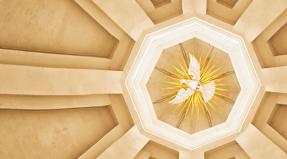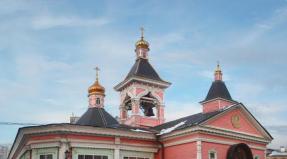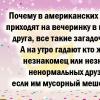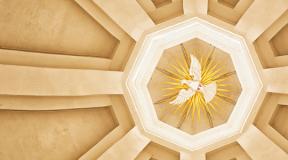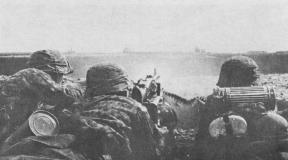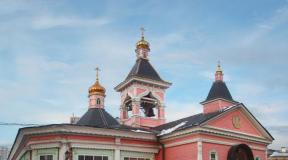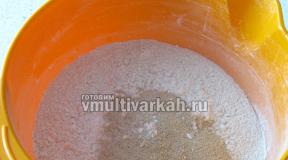Church of the Transfiguration of the Lord in the Bogorodskoye schedule. Church of the Transfiguration of the Lord in Bogorodskoe. Priest Alexy Dobroserdov
The first settlement on the site where today stands the Church of the Transfiguration of the Lord in Bogorodskoye was the village of Alymovo, mentioned in chronicles from 1550. Around 1680, a chapel was erected here in honor of the Mother of God, after which the village was called Bogorodskoye (later this was the name given to the whole area located on the banks of the Yauza River).
In 1902, the village became part of Moscow.
The Spassky Church was one of those few wooden shrines that managed to survive. The church was never closed, it was never looted during the years of Bolshevism.
The temple was built in 1880 on the site of an old wooden one, which was dismantled long before the construction of the new one. Later, a gallery was added to the building. A gatehouse was also erected near the church, reminiscent in style of the shrine itself.
Initially, the Church of the Transfiguration in Bogorodskoye did not have its own parable; it was assigned to the Cherkizovsky Church. In summer, services were held every day, in winter - only on holidays.
Already in 1891, the parable of the Spassky Church began to take shape. Soon this required expansion of the building, and in 1894 2 aisles appeared. In 1897, the southern aisle of the church was consecrated.
The architectural style of the temple is dominated by elements of eclecticism and Novgorod buildings. Thus, a log quadrangular building with one onion dome was built on a brick foundation. Above the refectory is a tented bell tower with an open ringing and seven bells.
In 1922, Patriarch Tikhon held a service for the last time, after which he was arrested. At the same time, the temple was not closed, and the material values of the shrine were not touched.
In the 1930s, workers at the Krasny Bogatyr plant advocated for the preservation of the church. The Church of the Transfiguration was also defended by its rector, Alexander Dobrosedov.
Eyewitnesses recalled that even in the most terrible atheistic times, Father Alexander was seen on the street in priestly attire, people came up to him and received a blessing right on the street.
Despite the fact that history has saved the Spassky Church in Bogorodskoye from many sad events, the church was twice subject to fire.
So, in 1954 the temple burned. Then all the decoration was destroyed, the icons perished in the fire, and miraculously only two survived. Another fire happened in 2004. This time, the church utensils survived, and the icons were not damaged, but the walls of the shrine were damaged, and the roof completely burned down.
The temple was soon restored. Today the Spasskaya Church is operational.
The Church of the Transfiguration of the Lord in Bogorodskoye is located at the address: Moscow, Krasnobogatyrskaya, 17 (Preobrazhenskaya Ploshchad metro station).
With openwork carvings of cornices, carved columns, lace trim on the windows, elegant porches, and domes.
The temple is a wooden miracle of the century before last and was consecrated on August 17, 1880 with the blessing of Metropolitan Macarius of Moscow.
Construction of the temple
At first, the Church of the Transfiguration of the Lord in Bogorodskoye did not have its own parable, but was assigned to the temple. Services were performed by Ilyinsky clergy. In the summer, services were held every day, and in the winter only on holidays, since the main parishioners of the temple were considered to be summer residents.
In 1887, the Bogatyr plant was built in Bogorodskoye, which produced rubber footwear: galoshes, boots, boots. Hundreds of workers with their families moved to the village, and the temple could no longer accommodate all the pilgrims. We decided to add two side aisles to it. The Tikhvin Icon of the Mother of God was placed in the right aisle of the temple, which was consecrated in her honor in 1897, and a year later the left one was consecrated in honor of the Prophet Elijah of God and St. Alexis, Metropolitan of Moscow.
Priest Alexy Dobroserdov
The first rector of the temple was Archpriest Alexander Tikhonovich Kolychev, and in 1902 the young deacon Alexy Ivanovich Dobroserdov entered the service, who later, by the will of God, had to play a huge role in the history of the temple.

Alexy Ivanovich became the rector of the church in 1917 and served in it for 47 years. Father Alexy was a very zealous priest and strictly followed the Divine Service Rules. During the fierce atheistic years, the priest never took off his cassock and fearlessly blessed everyone who approached him.
God-fighting years
The Church of the Transfiguration of the Lord in Bogorodskoye was able to defend itself only thanks to the authority of Father Alexy and his ability to unite people. In the difficult years of the early twentieth century, when people faced death or exile simply for being believers, in Bogorodskoye the Soviet government was unable to close the church. A crowd of thousands of factory workers surrounded the temple and did not allow the atheists to enter. People were on duty at the temple for many days from morning to evening in order to inform the workers at the first danger, since they, in turn, categorically declared: if the Church of the Transfiguration of the Lord in Bogorodskoye is closed, then none of them will go to work. Fearing a strike at such a large plant, the chairman of the Central Election Commission canceled the decision to close the temple.

During the Second World War, the windows of the church were darkened during the fascist bombing, and in the church itself there was continuous prayer for the people, for the country. Prayer made my soul feel much lighter and calmer.
After the victory, in 1945, the church council began to work on building a house for the rector. Subsequently, the priest left a will so that this building, after his and mother’s death, would remain for the needs of the temple.
Now the Church of the Resurrection Deanery, or the Deanery of the Moscow Diocese of the Russian Orthodox Church, also includes the Church of the Transfiguration of the Lord in Bogorodskoye.
Fire in the temple
In 1954, on August 14, shortly before, a miracle occurred that will forever remain in the history of the temple. Late at night before the holiday, a fire broke out in the temple. A taxi driver driving by noticed flames coming from under the dome and called the fire department. When the firefighters put out the fire, a sad picture opened before them: everything around was scorched, the iconostasis, icons, even the chandelier were burned, but...

The Tikhvin Icon of the Mother of God and the Icon of St. Nicholas the Wonderworker remained unharmed. Everything around was blazing with fire, and these two large icons were not even touched by the flames. On the same day, the head of the Russian Orthodox Church the First visited the temple and promised to assist in every possible way in
Restoration of the temple
Soon gilded iconostases were brought from Peredelkino, which, amazingly, approached all three aisles of the temple. Obviously, at the same time the icon of the holy martyr Tryphon was donated. Now the church houses many icons painted after the fire or received as a gift. Among them are the icon of the Mother of God “Quick to Hear,” the icon of the Prophet Elijah, the icon of Matronushka with a particle of relics and the icon of Seraphim of Sarov with a particle of relics, and so on.
Every day there is a service in the temple. The churches of the Moscow Diocese are not only a place for the faithful to gather and serve the Lord God, but also living monuments to the history of the Russian Orthodox people, which must be known and preserved.
Church of the Transfiguration in the village of Bogorodskoye
Bolshaya Bogorodskaya, now Krasnobogatyrskaya street, 17, corner of Millionnaya street.
"The village has been known since the 14th century; until the mid-18th century, it was the property of the Chudov Monastery. Since the mid-19th century, it has been a dacha area. Since the beginning of the 20th century, it has been within the boundaries of Moscow."
“Here at first there was the village of Alymovo, the patrimony of the Chudov Monastery. When the Church of the Assumption was built, the name “village of Bogorodskoye, Alymovo” appeared. In 1680 it was mentioned that “a chapel was built in the church cemetery, and near the cemetery there was a monastery courtyard.” About 300 "Bogorodskoye remained without a church for years. A new church was built in 1880, 700 fathoms from the previous location."
The chapel has also been preserved.
"The village was included within the city limits even before the revolution. It began to be settled around the 1870s as a summer residence. The central part of the current wooden church was built in 1880. Later, the western gallery was added. The chapel of Our Lady of Tikhvin was consecrated on June 15, 1897 (from the south. - P.P.), Elijah the Prophet and Metropolitan Alexy June 12, 1898 (from the north. - P.P.)."
In 1922, before his arrest, Patriarch Tikhon served his last free service in the church in the village of Bogorodskoye:
“The calm greatness of the Patriarch these days is manifesting itself with amazing force. Before his last service in freedom in the church of the village of Bogorodskoye (in Moscow), the Patriarch appeared from the Chek (and not from the court) late at night. He said to his cell attendants, exhausted from waiting : “They interrogated them very strictly.” “What will happen to you?” “They promised to cut off your head,” answered the Patriarch with his invariable complacency. He served the Liturgy as always: not the slightest nervousness or even tension in prayer.”
In the 1930s the temple did not close.
“Even in the 30s, when believers were threatened with exile and camp just for admitting themselves to be believers, even in those days the voice of protest did not cease. The priest of the Transfiguration Church, in Bogorodskoye in Moscow, managed to organize the workers of a neighboring factory "Bogatyr" so that the decision to close the temple simply could not be carried out: a crowd of thousands of factory workers surrounded the temple in a dense ring, not letting the Bolsheviks in. Workers' pickets were on duty at the temple day and night for many days, ready to inform the factory workers at the first danger , who categorically told the authorities: if the temple is closed, not a single person will go to work." In 1951, a large fire broke out inside the altar as a result of a rug that unnoticedly caught fire, in which all the interior decoration and icons were destroyed, with the exception of the miraculously surviving images of Our Lady of Tikhvin in the chapel of the same name and St. Nicholas. New iconostases and images were soon transferred for the restoration of the temple from the warehouses of the Trinity-Sergius Lavra, where the decoration of some destroyed and closed churches was stored. Externally, the temple, however, was not damaged.
In 1980 he celebrated his 100th birthday. The church in Bogorodskoye stands on a brick foundation, the walls are built of logs, not covered with boards. Together with c. St. Nicholas in Biryulyovo are the last two functioning wooden churches in Moscow. On the bell tower there are seven small bells that ring. There is a fence around it made of iron bars (later). The temple is well maintained. The building is not under state protection, but is included in the list of objects proposed for state protection in Moscow.
TEMPLE OF THE Savior's Transfiguration in Bogorodskoye Temple address: 107564, Moscow, st. Krasnobogatyrskaya, 17 (metro station "Preobrazhenskaya Square").
Thrones: Transfiguration of the Savior
Tikhvin Icon of the Mother of God
Prophet Elijah
St. Alexia, Metropolitan Moscow
Shrines: The miraculous image of the Mother of God of Tikhvin
Updated icons:
Holy Trinity
All Saints and the Resurrection of Christ
Yakhromskaya Icon of the Mother of God
Icon of the Venerable Seraphim of Sarov with insertion of relics
Relics:
Rev. Seraphim of Sarov (inserted into the icon), also part of the prayer stone
Optina Elders (in a separate reliquary)
St. Alexy, Met. Moscow (in the reliquary on the icon)
As a gift to the Chudov Monastery from Ivan the Terrible
The village of Bogorodskoye, now part of the Eastern Administrative District of Moscow, is located on the north-eastern outskirts of the capital, on the left bank of the Yauza River and adjacent to the Losinoostrovsky forest park. This holy name of the village and the surrounding area comes from antiquity and has been known since the 14th century, when, according to legend, on the site of the present Church of the Transfiguration there stood a wooden chapel in honor of the Blessed Virgin Mary. In the census book of 1550-1551, this territory is mentioned as the village of Alymovo - the patrimony of Prince Lykov-Obolensky. For a short time, Alymov was owned by Tsar Ivan the Terrible. On May 5, 1568, the sovereign signed a charter granting these lands to the Chudov Monastery. By 1689, a chapel was built in Alymov, and since then the name Bogoroditsky or Bogorodskoye has been firmly assigned to the village. And according to legend, not far from the present one there was a wooden church of the Dormition of the Mother of God, which is why the place was called Bogorodskoye. The temple and the village subsequently burned down, the land was empty for some time, but the name of the area remained. Gradually, people from the nearby villages of Cherkizov and Preobrazhenskoye settled in the fire, the village of Bogorodskoye was restored again, from the middle of the 19th century already as a dacha suburb of Moscow. The question arose about the construction of a new temple.
In 1877, residents received permission to build a single-altar church in the name of the Transfiguration of the Lord, and on August 17, 1880, the temple was consecrated with the blessing of His Eminence Metropolitan Macarius of Moscow by the Right Reverend Ambrose of Dmitrov. The temple was built from selected wood. It was small, with a high bell tower, and at the same time cozy. It suited the residents quite well. The ringing of the bells was particularly melodious. The first thing that was built next to the temple was a church gatehouse, repeating its architectural style. At first, the temple did not have its own clergy, and was assigned to the Cherkizovsky Church of the Prophet Elijah. Requirements and services were performed by the next priest of the Elias Church. In the summer, services were held daily, and in the winter only on holidays.
The first rector of the temple
In 1891, with the arrival of the first rector of the temple, Alexander Tikhonovich Kolychev, a clergy began to form.
Archpriest Alexander Tikhonovich Kolychev was born in 1837, ordained to the priesthood by Metropolitan Philaret (Drozdov), died on September 11, 1907. He served in the temple for 16 years, from 1891 to 1907.
He remained forever in the memory of old-timers. He was strict and demanding towards people who lived in abundance, but did not thank the Lord with their charity, and towards the poor he was soft and condescending. Father Alexander was distinguished by his talent as a preacher, which is why the parish constantly grew, and the people became crowded in the small church. In 1894, expansion of the temple building was required. It was decided to attach 2 side chapels in the form of galleries to the main church: the right one - in honor of the Tikhvin Icon of the Mother of God, and the left one in the name of the Prophet Elijah and St. Alexis.
Here is an excerpt from the “Moscow Church Gazette”: “On May 14, 1897... at the local Church of the Transfiguration of the Savior a new chapel was laid in honor of the Tikhvin Icon of the Mother of God... A silver plaque with an inscription [certifying the date] was placed at the base of the Holy See bookmarks]". Further: “On Sunday, June 15... the consecration of the newly constructed chapel was performed... The rite of consecration of the chapel and the Liturgy were performed by the rector of the church and the dean, Father Alexander Kolychev, with the priests of the churches of the villages of Cherkizov, Karacharova and Izmailov while the choir of Mr. Orlov sang.” .
A little more than a year later, new materials are published: “On Sunday, July 12, 1898, in the Church of the Transfiguration... a new chapel was consecrated in honor of the Holy Prophet Elijah of God and St. Alexis, Metropolitan of Moscow. This chapel is located on the left side of the main church in a wide gallery that currently surrounds the entire temple... The cost of constructing the chapel and gallery cost more than 10 thousand rubles, which were donated by philanthropists and summer residents..."
At the beginning of our century
From 1899 to 1905, Father Alexander was assisted by Father Peter Rozhdestvensky. There were no deacons until 1902. It was in 1902 that Deacon Alexey Ivanovich Dobroserdov was appointed to fill the first vacancy. He played a huge role in the history of the temple, as he served there for 47 years.
In the last years of Father Alexander Kolychev’s life, in 1904-1905, a parochial school was built on Bolshaya Bogorodskaya Street (now Krasnobogatyrskaya), not far from the Bogorodskoye cemetery, where the children of many peasants and artisans were able to receive an education.
The first rector, Father Alexander Kolychev, died on September 11, 1907. He was buried at the Bogorodskoye cemetery. According to his will, a chapel was built in the style of ancient Novgorod buildings using the funds left by him. This cemetery has been preserved to this day; funds are being collected for the restoration of the chapel, and the current father rector holds funeral services at its walls.
Honored Archpriest, Dean Father Mikhail Aleksandrovich Suvorovsky, who served in the church for 10 years, from 1907 to 1917, was appointed the second rector of the temple from Bronnitsy. Father Mikhail, a former academician, a man of high spiritual level, deeply intelligent, was at the same time very simple and friendly with people. He was extremely fond of children. Under him, a two-story stone house was built opposite the temple for the spiritual education of parishioners and giving lectures. Father Mikhail paid a lot of attention to education and enlightenment, gave lectures, and taught in several schools. For his efforts he received awards: annual thanks from the Bronnitsy teaching staff, a silver medal in memory of the 25th anniversary of the founding of the parochial school in Bogorodskoye, the Order of St. Anna III and II degrees, the Order of St. Vladimir IV degree, diplomas of the Holy Synod, gratitude from the Council of Orthodoxy of the Missionary Society . On the day of the 50th anniversary of his impeccable service, the administration of the Bogatyr plant, with the blessing of Bishop Arseny, presented icons and a golden pectoral cross as a gift. In addition to the rectorship, he was the chairman of the congresses for elections to the State Duma in 1907 and 1912, as well as the chairman of the zemstvo council of trustees. In 1913, in honor of the 300th anniversary of the House of Romanov, he opened the Preobrazhensky Brotherhood at the Bogorodsk parish school. In 1915, by appointment of Metropolitan Macarius, Father Michael became a member of the sanitary executive committee. Father Mikhail Suvorovsky died on December 17, 1917 and was buried in his homeland.
His Holiness Patriarch Tikhon in the Bogorodsky Church
Before moving on to a description of the life and works of the third abbot, we will introduce you to one episode from the history of the temple. In 1922, His Holiness Patriarch Tikhon served in our church, about which evidence has been preserved in church historical literature: “The calm greatness of the Patriarch these days is manifested with amazing power. Before his last service in freedom in the church of the village of Bogorodskoye (in Moscow), the Patriarch appeared from the Cheka (and not from the court) late at night. To his cell attendants, exhausted by waiting, he said: “They interrogated them very strictly.” - “What will happen to you?” - “They promised to cut off your head,” the Patriarch answered with his unchanged complacency. He served the Liturgy as always: not the slightest nervousness or even tension in prayer." (Prot. M. Polsky “New Russian Martyrs”, Jordanville, 1948 T.1 P.102).
The third rector of the Bogorodsky Church was Father Alexy Dobroserdov. Father Alexy was born in 1872 in the village of Khatun near Serpukhov in the family of a psalm-reader. He graduated from the Moscow Theological Seminary in 1887 with the first category and after some time was sent as a teacher to the Perervinsky Theological School. Then he was a psalm-reader in the Church of the Assumption on Pokrovka, and from 1902, when he was ordained a deacon, he served continuously in the Bogorodsky Church: until 1906 as a deacon, then as a priest, and from 1917 to 1949 as rector of the temple. Father Alexy died on April 17, 1949, having served as a priest for a total of 47 years.
This is a special page in the history of our temple. Father Alexy strictly adhered to the liturgical regulations, revered and respected his priestly rank, and never took off his cassock. Even in those godless years, he could often be seen on the street in priestly attire, people came up to him and he gave a blessing right on the street. Father Alexy was loved and respected by everyone in Bogorodskoye. Even people far from the Church came up to him, took off their hats, and sometimes bowed to the ground. During the most severe persecution of the Church, Father Alexy managed to defend the temple and did not give it up for desecration. The temple did not close.
There was no way for atheism in Bogorodskoye
What was it like in those days? Old-time workers at the Krasny Bogatyr plant told how they were called to the party cells and sent to the church to keep an eye on the priest in order to find anything anti-Soviet and inflammatory in his sermons and speeches.
Here is an excerpt from foreign sources: “Even in the 30s, when believers were threatened with exile and camp just for recognizing themselves as believers, even in those days the voice of protest did not cease. Priest of the Transfiguration Church in Bogorodskoye in Moscow , managed to organize the workers of the neighboring Bogatyr factory in such a way that the decision to close the temple simply could not be carried out: a crowd of thousands of factory workers surrounded the temple in a dense ring, not letting the Bolsheviks in. Workers' pickets were on duty at the temple day and night for many days, ready at the first There is also the danger of informing the factory workers, who categorically told the authorities: if the temple is closed, not a single person will go to work" (V. Stepanov-Rusak, “Evidence for the Prosecution”, Jordanville, 1987. Part 2 P. 248)
The fact that everything was exactly like this can be believed thanks to some publications of those times in the Soviet press. The factory cell of the Union of Militant Atheists disintegrated. By mid-1939, there were 1,280 people left. Anti-religious propaganda was remembered 2 times a year: “at Easter” and “Christmas”. The reader may have a question: is 1280 members for a plant cell a lot or a little? For comparison, in the factory cell of the MOPR (International Organization for Assistance to Revolutionaries), a cell that was much less significant for Agitprop at that time, there were 3,494 people in August of the same 1939. The difference is quite significant.
Let's continue the story about the priests of that time. An unusually modest and unpretentious man, Father Alexy and his mother Maria Vladimirovna lived very modestly in the attic of a dilapidated house, where it was very cold, in winter water froze in buckets and it was impossible to be without outer clothing. But the father did not lose heart. Father Alexy Dobroserdov gave all his kind heart to serving his beloved flock. And the flock paid him the same.
Great Patriotic War in Bogorodskoye
Old-timers remember the darkened Bogorodskoye. There was terrible destruction from the bombing, but the temple remained intact. There was continuous prayer for Russia, for the people, for loved ones in evacuation, for relatives who found themselves under occupation, for the siege survivors in Leningrad. The latter requires special explanation. The fact is that among the personnel backbone of the “Red Bogatyr” there were many St. Petersburg residents from the famous “Red Triangle”. The Moscow Rubber Manufactory Partnership was founded on August 7, 1887, almost simultaneously with the founding of the temple, and these former St. Petersburg workers were among its first parishioners. In the 30s, they also contributed to the protection of the temple from atheists.
In 1945, the church council of the temple urgently sought to build a small wooden building for the rector, given his poor health. In 1946 permission was granted and in 1947 the existing residential premises with a terrace were added to the gatehouse. After the consecration of the new house, Father Alexy moved in with his mother, fully financing it. He left a will so that after the death of him and his mother, this premises would remain for the needs of the clergy of the temple, which is still being fulfilled. This wooden house houses the cells of the clergy.
Fr. Alexy Dobroserdov was rector until his death, on April 17, 1949. He died at the age of 77. Everything in Bogorodskoye buried the priest. The coffin was carried on the shoulders, the funeral procession filled the entire Bolshaya Bogorodskaya Street, and trams were stopped. At the gates of the cemetery he was met by the clergy with icons. Father Alexy was buried not far from the chapel.
Bogorodsk Church Choir
Another page in the history of the temple coincides with its beginning with the activities of Father Alexy. This is a page about the choir of the right choir, which from 1937 to 1978 was headed by a master of his craft, who devoted his entire life to serving God, Seraphim Ivanovich Vinogradov.
Seraphim Ivanovich Vinogradov was born in Moscow into the family of a priest in 1905, shortly after the glorification of St. Seraphim of Sarov. In honor of this saint, Father John named his son, who served in the church attached to the Moscow Nikitsky convent in the name of St. Seraphim. As a boy, Seraphim Vinogradov began singing in the monastery choir, then became a psalm-reader. After graduating from the Scriabin Music College, he sang in the church choir of the Epiphany Cathedral in Dorogomilov under the direction of regent P.K. Nesterov. Seraphim Ivanovich began his regency activities in 1928. In 1937, he became regent of the Moscow Church of the Transfiguration in Bogorodskoye.
During the Great Patriotic War, S.I. Vinogradov was in the ranks of the Soviet Army, and after returning from the front, he continued to work in the choir of the Transfiguration Church.
His Holiness Patriarch Alexy I, performing an akathist before the miraculous Tikhvin Icon in the Transfiguration Church on February 9, 1960, spoke very well of the singing of the choir of Seraphim Ivanovich. The choir repeatedly gave spiritual concerts in Moscow theological schools, and His Holiness Patriarch Alexy and other hierarchs were often present at these concerts.
For his diligent work for the benefit of the Church, His Holiness Patriarch Alexy I awarded S.I. Vinogradov with the Patriarchal Charter in 1962, in 1965 - with the Order of St. Prince Vladimir, III degree, in 1969 - with the Order of St. Prince Vladimir, II degree. His Holiness Patriarch Pimen also highly appreciated the talent of Seraphim Ivanovich. Having known him for many years, Patriarch Pimen showed him signs of personal attention. In 1975, on the occasion of his 70th birthday, S.I. Vinogradov was awarded the Patriarchal Letter from Patriarch Pimen; on the day of the celebration of the 50th anniversary of his regency, he was awarded the Patriarchal Letter and the Vladimir Icon of the Mother of God from His Holiness Patriarch Pimen. The last award - the Order of St. Sergius of Radonezh, III degree, was awarded to S.I. Vinogradov in 1980 in connection with his 75th anniversary.
S.I. Vinogradov died after a serious illness on November 25, 1996, and was buried at the Preobrazhenskoye cemetery.
After Father Alexy Dobroserdov
Let us return again to the names of the priests who worked in the church in the difficult position of abbot.
In 1949, after the death of Father Alexy, Archpriest Simeon Vasilyevich Kasatkin was appointed rector of the church. He was born in 1869 in Moscow. After graduating from the Moscow Theological Academy, he worked for some time as a proofreader at the Synodal Printing House.
In 1906, Father Simeon accepted the priesthood and was assigned to the Church of the Intercession of the Most Holy Theotokos in Rubtsov. Then, from 1934 to 1936 he served at the Semenovskoye cemetery in the Resurrection Church, from 1936 to 1938 - in the Church of Prophet Elijah in Cherkizovo, and in September 1941 he was transferred to our temple.
He was a man of high spiritual culture; during his service in the church, he gained respect and love from the parishioners. Father Simeon died on September 12, 1953, having served immaculately as a priest for 47 years. He was also buried at the Bogorodskoye cemetery, next to Father Alexy.
After the death of Father Simeon, Father Vasily Studenov acted as rector for some time, and then, in 1954, Father Vasily Skvortsov (Slepenky) was appointed.
Appearance of the miraculous icon (fire)
In 1954, on the Feast of the Origin of the Honest Trees of the Life-Giving Cross of the Lord (First Savior), August 14, a miracle occurred that will forever remain in the history of the temple. On the night of the holiday, a fire broke out in the temple. And it was like this...
Here is the story of an eyewitness to the event - Archpriest A.N. Egorov: “On the eve of the holiday, during the all-night vigil, the altar attendant Mother Nadezhda lit a censer and probably caused a burning spark. Afterwards, during the investigation, it was established that the fire started from the left altar. The only surprising thing is that that when the church was closed in the evening after the all-night vigil, there was no burning smell. And the prosphora-maker Pelageya Sofronovna walked around the church around midnight and also didn’t notice anything. True, it seemed a little strange to her that the windows were somehow unnaturally black, but she didn’t attached serious importance to this, and this was probably already soot. Only in the dead of night a taxi driver passing by saw fire breaking out from under the dome of the temple. He immediately reported to the fire department next to the temple. When the firefighters arrived, everything they were sleeping in the guardhouse. The temple and the gates were all locked. They began to break in. Pelageya Sofronovna, waking up, began to shame them, thinking that they were ill-wishers. When she saw that the temple was burning, in a panic she could not find the keys. Firefighters broke the locks. As soon as they opened the inner doors, the influx of fresh air instantly intensified the fire, which almost scorched the firefighters. They had to work a lot. The house where we lived was not far from the temple. I was already a priest. When they woke us up and said that the church was burning, everyone ran there. What I saw boggles the mind. The fire was mostly extinguished, only some places were smoking. Everything was black from burning and soot and filled with water. I walked along the half-burnt floorboards to the left altar. The throne barely stood on four burnt pillars. The altar board, also badly burned, was barely holding on. The antimension suffered very little damage, since a massive Holy Gospel bound in metal lay on it. Everything else in the left altar was burned out. The main and right altars suffered a little less damage, although almost everything there was burnt out. The interior of the temple, namely the iconostasis, icons, paintings, plywood paneling - everything burned down. The heat was so strong that the chandelier in the left aisle even melted. It’s good that all ventilation was closed - windows, vents and door. The fire raged in a closed room and, thank God, largely because of this the temple remained intact, and only near the eve in the left aisle between the windows was the wall burned through. The rich brocade sacristy and storeroom were greatly damaged by the fire. Only the image of the Mother of God of Tikhvin and the image of St. Nicholas remained intact and intact. .."
The Most Holy Theotokos turned the fire away from Her icon, thereby showing us a visible image of Her eternal intercession. All night the fire blazed around her, the metal melted, the burnt icons smoked, but the Tikhvin Icon remained unharmed. The image of St. Nicholas the Wonderworker also remained incorrupt.
And the temple quickly returned to its splendid appearance. The parish remained and rallied even more around the church.
Renovation of the temple after the fire
On the morning of the First Savior, the parishioners came to mass. Sorrow overwhelmed them when they saw the scene of destruction. On the same day, Patriarch Alexy I visited the temple with his secretary and promised all assistance in restoration. Following this, a state commission arrived, which, after a thorough inspection, came to the conclusion that all the walls and translations were intact and could be used, it was just a matter of repairs. The next day, a crowd of enthusiasts with instruments gathered at the temple gates. As soon as the temple was opened, everyone began to clean the candlesticks, walls, icons from burning, wash the windows and chandeliers. Already on the third day, in the completely scorched but cleaned temple, although without electricity, a service was already underway in the right aisle. Donations flowed in like a river, and some pensioners gave away their entire pension at one time, just to quickly restore the church.
Soon, major renovations began. With the blessing of Patriarch Alexy, a gilded iconostasis was brought from Peredelkino, which surprisingly fit after a little adjustment to the three altars of our church. During the renovation, the temple was expanded by removing glass partitions in the right and left aisles that separated the warm part from the cold.
But let's continue the history of the temple. In 1955, Father Vasily Skvortsov was forced to retire due to illness, and his place was taken by Priest Arkady Pavlovich Stanko, who had just graduated from the Moscow Theological Academy.
Young and energetic, Father Arkady began to restore the splendor of the temple. On his initiative, the temple was upholstered with expensive plywood, puttied, painted and painted. The iconostasis and other icons have been updated. In addition, stoves were removed from the altar and temple, and inefficient heating equipment was replaced with more modern and economical water heating equipment. Thus, the temple was restored even in better condition than it was before.
In 1957, Archimandrite Sergius Savelyev became the rector of the temple. During the two years of his abbotship, Father Sergius did a lot to glorify the Tikhvin Icon. He began serving conciliarly on Tuesdays, a solemn evening service with an akathist to the icon and a sermon. His services were distinguished by special pomp and solemnity, which attracted parishioners. Through his labors and efforts, an icon case was made for the Tikhvin icon, the image of the prophet was re-painted. Elijah and an icon case was made for him, an image of St. Seraphim of Sarov. Repairs were also made inside and out, and good ventilation was installed. A room for the clergy to rest was equipped below the temple, a flower garden was laid out around the temple, and the temple fence was replaced, which still stands today.
The decoration of the temple continues.
In 1959, Father Sergius left the position of rector for health reasons, and his post was taken by Archpriest Anatoly Vasilyevich Novikov, who graduated from the MDA. He was the rector of the temple until 1978. With his blessing, the icon cases were decorated with carvings, as were the altar and lecterns. The thrones were decorated with artistic metal vestments. There is central heating, the floor of the temple is covered with linoleum and covered with slabs. A large electric oven is installed for baking prosphoras. In the basement, on the site of the former boiler room, utility rooms are equipped. Now there is a sacristy, a boiler room, a wine cellar, workers' rooms, and a laundry.
Father Anatoly, with love and care, continued the initiative of his predecessor - weekly service at the Tikhvin Icon. There were many praying; they even came from the region. After reading the Gospel, the trio sang the stichera “Help for the Helpless,” the music for which was written by Father Sergius. The bishop was always invited to the feast of the Tikhvin Icon; the Metropolitan came, and then Patriarch Pimen.
After Father Anatoly was transferred to another church for 3 years of service, Father Arkady Stanko returned. Then, from 1981, Father Gennady Nefedov was the rector, who served there for 10 years and attracted many young people close to him in spirit.
In 1991-92, Archpriest Viktor Petlyuchenko, who now serves as obedience at the Odessa Theological Academy, served as the rector of the church.
And from 1992 to this day, Archpriest Damian Stepanovich Kruglik has been the rector.
Text from the temple website
The district got its name from the former village of Bogorodskoye, located on the left bank of the Yauza River. The village entered the Moscow city limits in 1902. The Transfiguration Church is one of the few surviving wooden churches in Moscow. He was lucky - it was never closed or plundered during the hard times of Bolshevism, no matter how much the Soviet government wanted it. The temple was built in 1880, in a dacha area that became part of Moscow at the beginning of the 20th century, in the village of Bogorodskoye, on the site of an ancient, dilapidated one, which had been dismantled long before. The western gallery was later added. 15.VI.1897 the southern chapel of the Tikhvin Icon of the Mother of God was consecrated. The chapel (from the north) of Elijah the Prophet and St. Alexis, Metropolitan of Moscow was consecrated on June 12, 1898. The temple is designed in an eclectic style with elements of ancient Novgorod buildings: a round tent with two tiers of vaulted semicircles, single-domed, quadrangular in plan, log on a brick foundation, with a bulbous dome. The bell tower above the refectory with seven bells is tented, with open ringing.
In 1922, the last service of Patriarch Tikhon took place in the church before his arrest. The temple was lucky - it was never closed or looted during the hard times of Bolshevism, no matter how much the Soviet government wanted it. In the 1930s, workers at the nearby Krasny Bogatyr factory strongly advocated its preservation. The temple burned down several times. In 1954, a fire broke out inside. All the decoration and icons were lost, except for the miraculously surviving Tikhvin Icon of the Mother of God (from the chapel of the same name) and the icon of St. Nicholas the Wonderworker. New iconostases and images were transferred from the storage facilities of the Holy Trinity-Sergius Lavra. With the blessing of His Holiness Patriarch Alexy I, the new gilded iconostasis was moved from the village of Peredelkino. The last fire occurred in the temple in 2004.
Shrines: especially revered icons of the Mother of God of Tikhvin, Smolensk, Jerusalem, “Joy of All Who Sorrow”, icons of the Prophet Elijah, Rev. Sergius and Seraphim, St. St. Nicholas the Wonderworker with the Life (in the altar), Rev. Seraphim of Sarov, the Most Holy Trinity, Yakhroma Icon of the Mother of God.
The church has a Sunday school, a children's choral group, and all possible assistance is provided to elderly parishioners.
A chapel is attached to the temple at the Bogorodskoye cemetery (Krasnobogatyrskaya St., 113). Built in 1908 over the grave of the first rector of the Church of the Transfiguration, Archpriest Alexander Kolychev, according to his will and at his expense. In 1938 it was closed, looted, desecrated. The burial was opened, leaving an empty sarcophagus. In the 1990s, it was restored with funds from parishioners and the Bogorodsk government.
In 1877, residents of the village of Bogorodskoye received permission to build a single-altar church in the name of the Transfiguration of the Lord, and on August 17, 1880 the temple was consecrated. The temple was built from selected wood, it was small, with a high bell tower, and at the same time very cozy. The ringing of the bells was particularly melodious. The first thing that was built next to the temple was a church gatehouse, repeating its architectural style. At first, the temple did not have its own parable and was assigned to the Cherkizovsky Church of the Prophet Elijah. Requirements and services were performed by the next priest of the Elijah Church; in the summer services were held daily, and in the winter on holidays. In 1891, with the arrival of the first rector of the temple - Archpriest Alexander Tikhonovich Kolychev, parables began to take shape. In 1894, expansion of the temple building was required. It was decided to attach two side chapels in the form of galleries to the main church: the right one - in honor of the Tikhvin Icon of the Mother of God, the left one - in the name of the Prophet Elijah and St. Alexis.
During the most severe persecution of the church, the third rector of the Bogorodsky Church, Father Alexander Dobrosedov (1917-1949), managed to defend the temple and not give it up for desecration. The temple never closed. Even in those godless times, Father Alexander could be seen in priestly attire on the street, ordinary people bowed to him from the waist up and took off their hats, and he gave a blessing to those who approached Father Alexander right on the street. Everyone in Bogorodskoye loved and respected him.
From the website of the Bogorodsky Church.
The church is a model. the so-called “dacha” wooden church. The chapels of the church were created according to the design of the famous artist-architect Fyodor Petrovich Skomoroshenko.
Read also...
- Who am I? (Tarantinki). Contest to guess who you are. Examples of characters (print) Characters for guess who you are
- Pathfinder board game: card game, skull and shackles
- A candle between two mirrors: mysticism and physics Observing a burning candle
- Project “Our Home - “Green Planet” “Green Patrol” Topic: “Green Planet”













